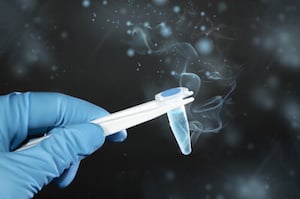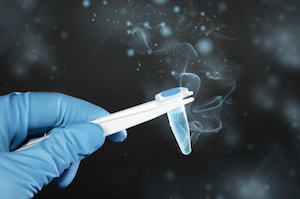We are experiencing a very high volume of calls and messages and ask for your patience. We will answer your portal messages within 48 hours.
We are experiencing a very high volume of calls and messages and ask for your patience. We will answer your portal messages within 48 hours.


Testicular sperm aspiration (TESA) is used to obtain sperm from men whose sperm count is zero (azoospermia). Approximately 1% of males and 15% of males seeking evaluation for infertility will have azoospermia. There are different types of azoospermia (obstructive vs. non-obstructive) and methods of surgical sperm retrieval used in these cases. Testicular sperm is immature and is unable to fertilize an egg on its own. A technique called intracytoplasmic sperm injection (ICSI) is used to fertilize eggs with testicular sperm. During ICSI, a micromanipulator is used to inject the sperm into the egg. The female partner, of course, has to undergo in vitro fertilization for us to obtain the eggs.
TESA can be performed on the day (or the day before) of egg retrieval and fresh testicular sperm can be used to fertilize the eggs. However, this can cause scheduling conflicts (availability of operating room and the urologist has to make time at short notice).
Another option is to perform TESA independent of the IVF cycle and cryo-preserve (freeze) the testicular sperm. An advantage of this is that the couple will know in advance that testicular sperm is available and (usually) NOT have to worry about the possibility of using donor sperm. This is very convenient for the urologist but adds additional steps (freezing and then thawing the sperm), which may interfere with success rates. So, a reasonable question is “Are the success rates different when we use fresh vs. frozen testicular sperm?”
In a recent meta-analysis review article (Fertil Steril 2014;101:344-9) Ohlander and collegues from the University of Illinois, Chicago compared the use of fresh vs frozen sperm ICSI in men with non-obstructive azoospermia. Study authors reviewed the available data on non-obstructive azoospermia and ICSI outcomes to determine if frozen sperm is associated with decreased fertilization and pregnancy rates. Inclusion criteria included four levels of data: men with nonobstructive azoospermia, fresh and frozen testicular sperm data, pregnancy as defined by fetal heartbeat, and fertilization per oocyte injected. The authors identified a total of 224 studies, 11 of which met criteria for inclusion. Data was analyzed from 275 cycles with fresh and 299 cycles with frozen testicular sperm.
Fertilization rates were similar when comparing fresh vs frozen sperm (53% and 54%, respectively). In addition, pregnancy rates were similar when comparing fresh vs frozen sperm (29% and 28%, respectively). The author said it is the first such study to specifically address the fresh-versus-frozen debate in this population.
Cryopreserved sperm may allow embryologist to know whether sperm is available for ICSI prior to egg retrieval. However, in the article it was noted that some investigators have cited concerns cryopreserved sperm is inferior to fresh sperm owing to the destructive nature of cryopreservation and a suggestion of inferior clinical outcomes.
To see a fertility specialist with a strong success rate of treating male and female infertility, make an appointment at one of InVia’s four Chicago area fertility clinics.

Entire Website © 2003 - 2020
Karande and Associates d/b/a InVia
Fertility Specialists
